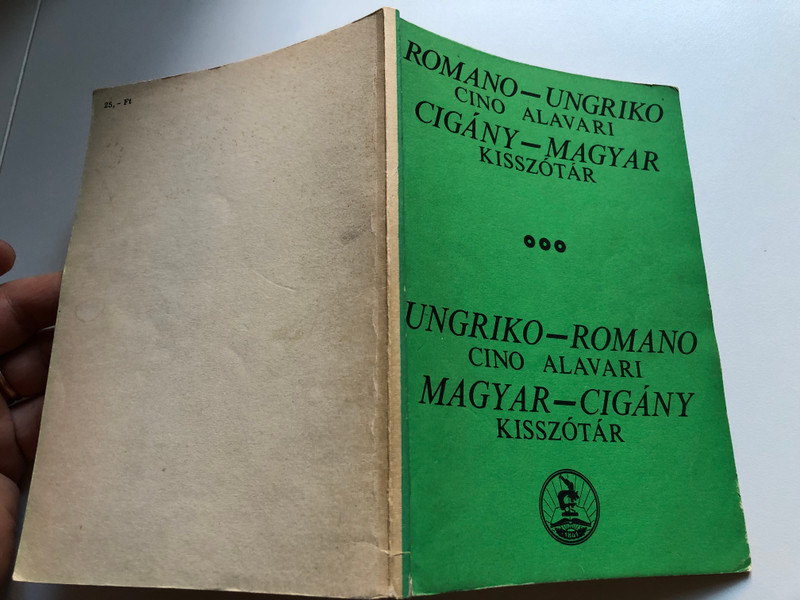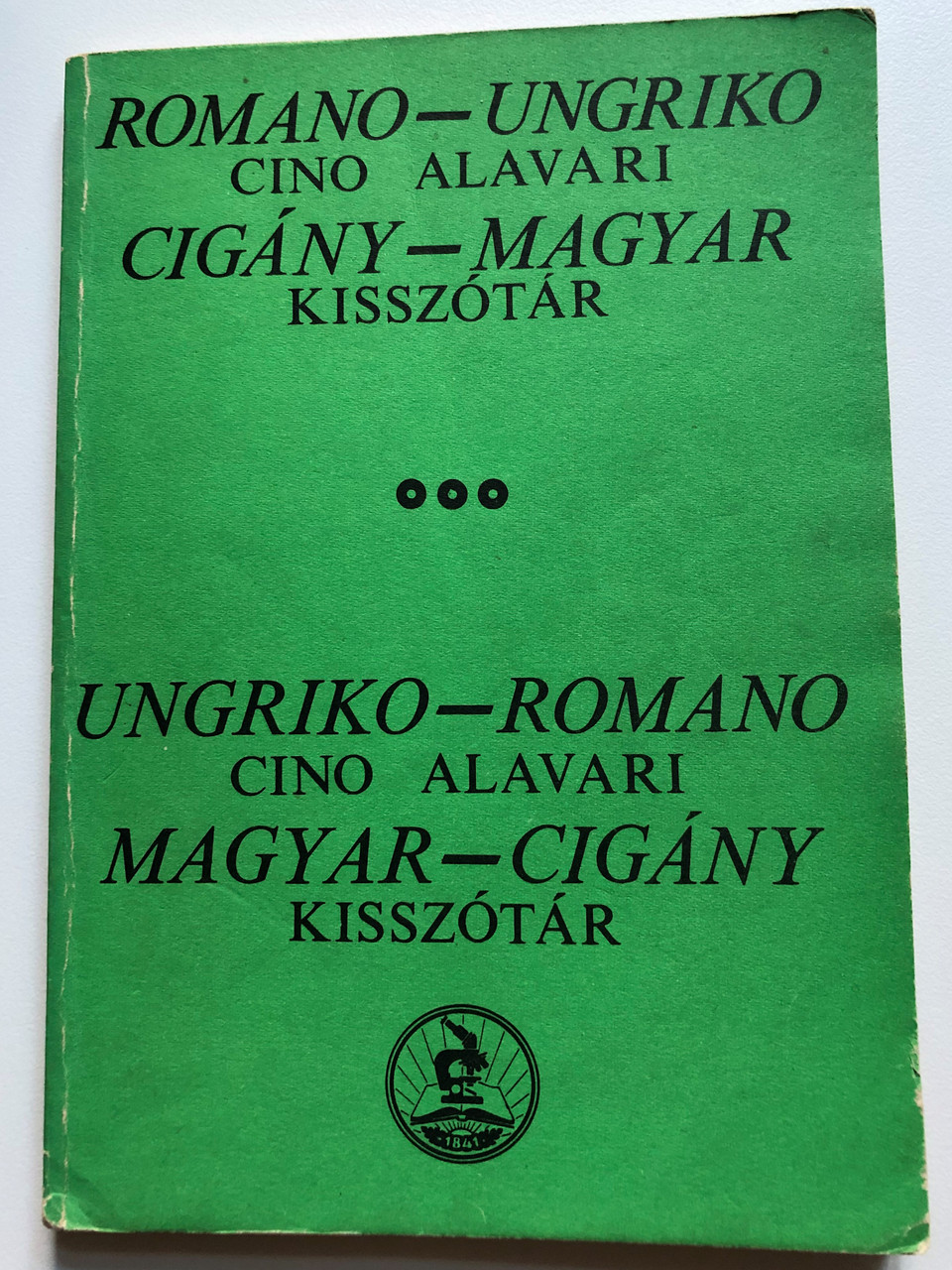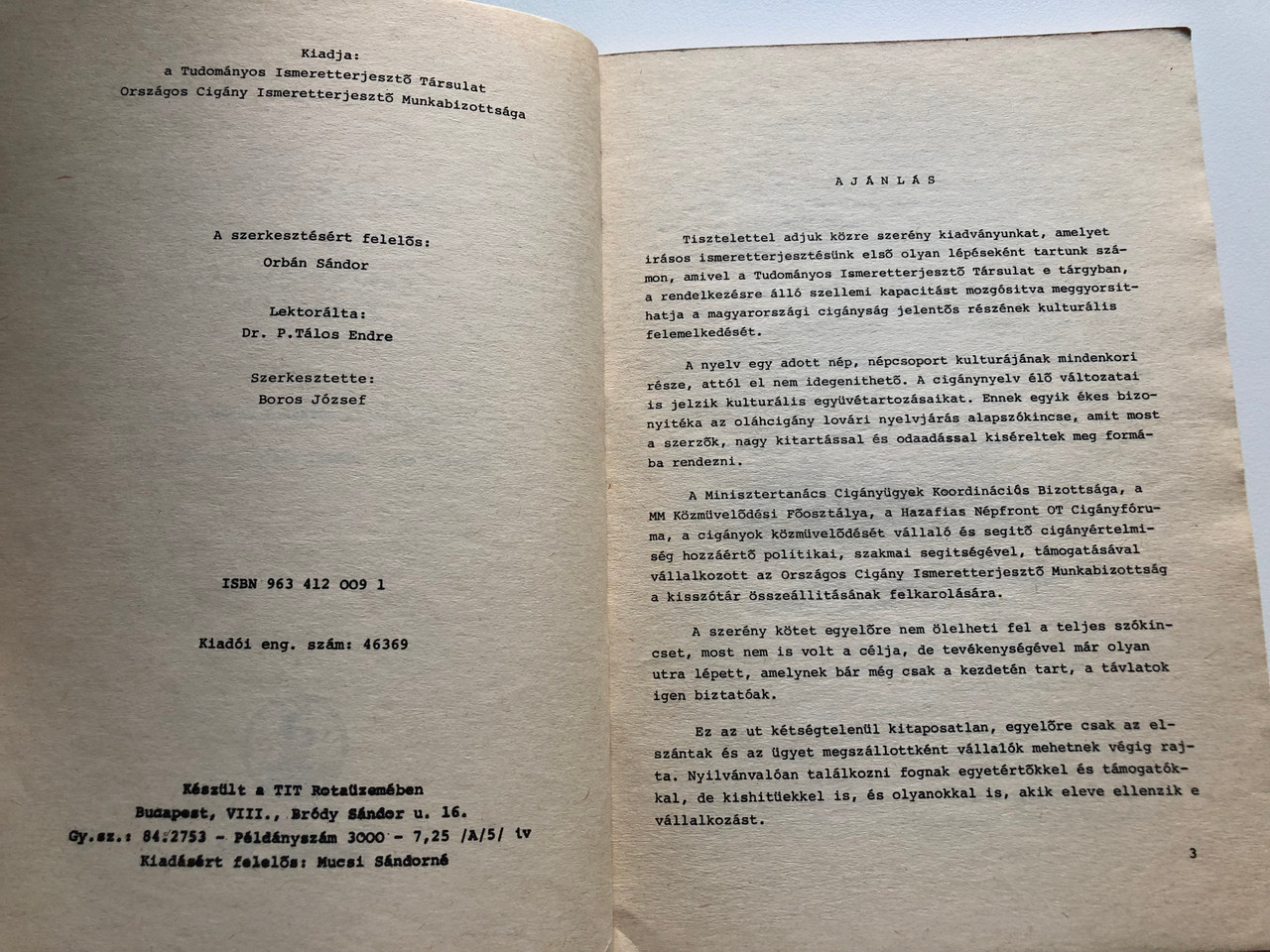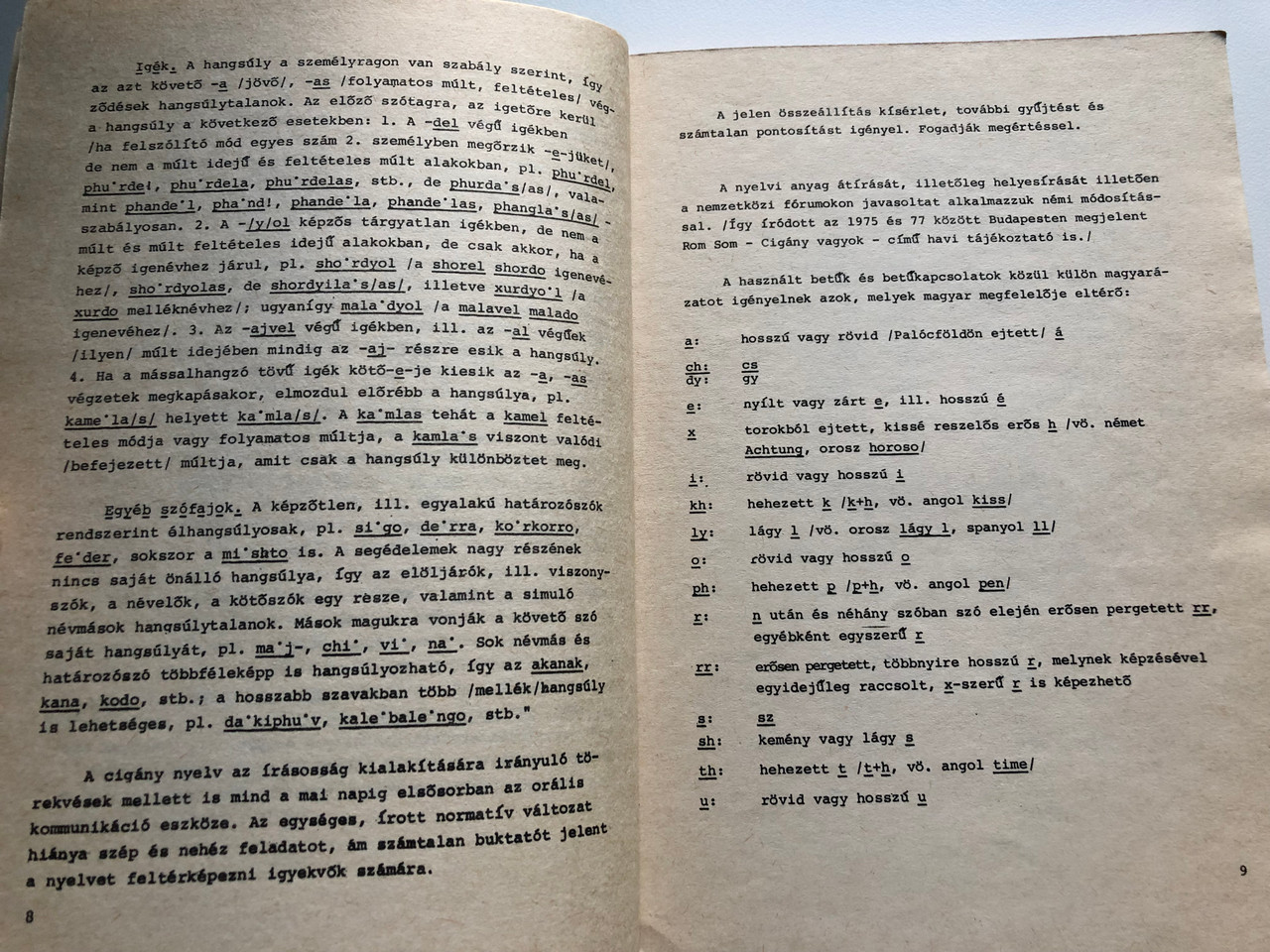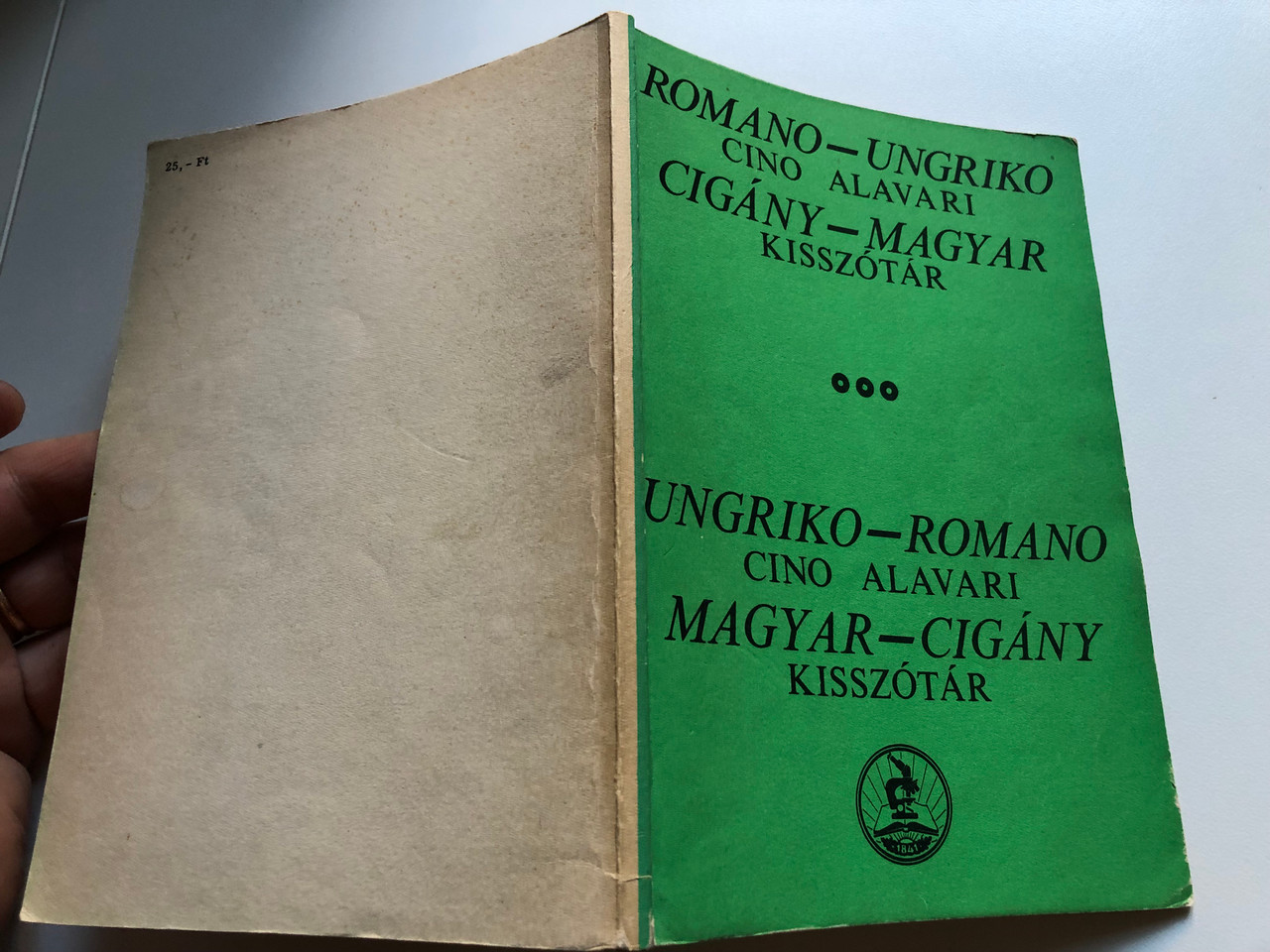Description
Romano-Ungriko cino alavari – Cigány-Magyar kisszótár
Ungriko-Romano cino alavari – Magyar-Cigány kisszótár
Romani (Gypsy) - Hungarian Dictionary
Product Information | Termékadatok
- Title | Cím: Romano-Ungriko cino alavari – Cigány-Magyar kisszótár / Ungriko-Romano cino alavari – Magyar-Cigány kisszótár
- Authors | Szerzők: Choli Daróczi József, Feyér Levente
- Publication Year | Kiadás éve: 1984
- ISBN-13: 978-9634120094
- ISBN-10: 9634120091
- Pages | Oldalszám: 114
- Format | Kötés: Paperback / Puhatáblás
- Publisher | Kiadó: Tudományos Ismeretterjesztő Társulat
- Language | Nyelv: Romani - Hungarian / Magyar - Romani
Overview | Ismertető
English:
The "Romani-Hungarian & Hungarian-Romani Mini Dictionary" by Choli Daróczi József and Feyér Levente is a valuable linguistic resource for learners, translators, and anyone interested in the Romani language and culture. This concise bilingual dictionary provides a basic vocabulary of Romani and Hungarian words, making it an essential tool for communication and study.
The dictionary serves as an important bridge between Hungarian and Romani speakers, supporting language preservation and cultural understanding. Whether used for personal learning, academic study, or translation work, this compact dictionary offers fundamental vocabulary with clear and accessible entries.
Magyar:
A "Romano-Ungriko cino alavari – Cigány-Magyar kisszótár" Choli Daróczi József és Feyér Levente szerkesztésében egy értékes nyelvi segédlet azok számára, akik a cigány (romani) nyelvet szeretnék tanulni, fordítani vagy mélyebben megérteni.
Ez a kétirányú mini szótár alapvető szókincset biztosít a romani és a magyar nyelvek között, így hasznos eszköz a kommunikációban, nyelvtanulásban és kulturális ismeretek bővítésében. A kiadvány fontos szerepet játszik a romani nyelv és kultúra megőrzésében, és segít a magyar és romani közösségek közötti jobb megértés kialakításában.
Product Features | Jellemzők
✅ Romani-Hungarian & Hungarian-Romani bilingual dictionary
✅ Concise and easy-to-use format for language learners
✅ Essential vocabulary for basic communication and study
✅ Great resource for cultural understanding and language preservation
✅ Ideal for students, translators, and those interested in Romani language
✅ Romani-magyar és magyar-romani kétnyelvű szótár
✅ Tömör, könnyen használható formátum nyelvtanulók számára
✅ Alapvető szókincs a mindennapi kommunikációhoz
✅ Kiváló forrás a kulturális megértés és a nyelvmegőrzés támogatására
✅ Hasznos diákok, fordítók és a romani nyelv iránt érdeklődők számára
Interesting Facts | Érdekességek
The Romani language is spoken by millions of people worldwide, with various dialects across Europe.
Choli Daróczi József was a renowned Romani writer, poet, and linguist, dedicated to preserving and promoting the Romani language.
This dictionary plays a key role in fostering linguistic and cultural exchange, as Romani is often an oral tradition with limited written resources.
Mini dictionaries like this one help in maintaining endangered languages, providing tools for new generations to learn and use them.
A romani nyelvet világszerte milliók beszélik, különböző dialektusokkal Európa-szerte.
Choli Daróczi József híres cigány író, költő és nyelvész volt, aki a romani nyelv megőrzésének és terjesztésének szentelte életét.
Ez a szótár fontos szerepet játszik a nyelvi és kulturális csere előmozdításában, mivel a romani hagyományosan inkább szóbeli nyelv.
Az ilyen mini szótárak segítenek a veszélyeztetett nyelvek megőrzésében, lehetőséget teremtve az új generációk számára a nyelv elsajátítására.
Publisher | Kiadó
The Tudományos Ismeretterjesztő Társulat (Scientific Educational Society) is known for publishing educational and linguistic materials that support language learning, cultural studies, and academic research.
A Tudományos Ismeretterjesztő Társulat kiadó oktatási és nyelvészeti kiadványairól ismert, amelyek segítik a nyelvtanulást, kulturális tanulmányokat és akadémiai kutatásokat.
We value your feedback! | Véleménye fontos számunkra!
Have you used this dictionary? Share your thoughts and experiences!
Használta már ezt a szótárt? Írja meg véleményét!
Hashtags | Keresőcímkék
#RomaniHungarianDictionary #CigányMagyarSzótár #Nyelvtanulás #RomaniLanguage #LanguagePreservation #BilingualDictionary #RomaniCulture #HungarianRomani #Nyelvészet #MiniDictionary #RomaniCommunity #KulturálisMegértés #CholiDarócziJózsef #RomaniHungarianTranslation













